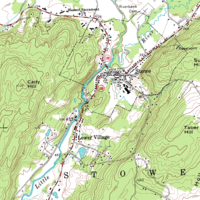
Photo from wikipedia
ABSTRACT Airborne Laser Scanning (ALS) generates accurate data for calculating forest metrics, such as canopy height, yet can be cost-prohibitive. Satellite-based stereo pair photogrammetry has the potential to overcome this… Click to show full abstract
ABSTRACT Airborne Laser Scanning (ALS) generates accurate data for calculating forest metrics, such as canopy height, yet can be cost-prohibitive. Satellite-based stereo pair photogrammetry has the potential to overcome this limitation of ALS to facilitate multi-temporal change analysis when ALS data capture is unfeasible; however, it remains largely untested across Australian conservation and production eucalypt forests. This study examined root-mean-square differences (RMSD) between canopy height measurements derived from ALS, field measurements and satellite-based photogrammetry for a spotted gum (Corymbia citriodora) plantation and scribbly gum (Eucalyptus racemosa) woodland in south-east Queensland, Australia. The comparison found satellite-based photogrammetry under predicted canopy height compared to field measurements and ALS, whilst the RMSD indicated low performance for satellite-based photogrammetry across the eucalypt plantation and woodland. The open and heterogenous forest structure typical in eucalypt forests combined with low point cloud density for photogrammetry to inadequately sample the canopy and increase stereo matching errors; which was exacerbated across the open and heterogenous scribbly gum woodland. Current satellite-based photogrammetry is therefore unlikely to provide a viable alternative to ALS when analysing canopy height across eucalypt forests at high-resolution. General surface analysis across large areas of eucalypt forest at moderate resolution, or airborne photogrammetric methods, could demonstrate increased viability as an alternative to ALS.
Journal Title: Journal of Forest Research
Year Published: 2020
Link to full text (if available)
Share on Social Media: Sign Up to like & get
recommendations!